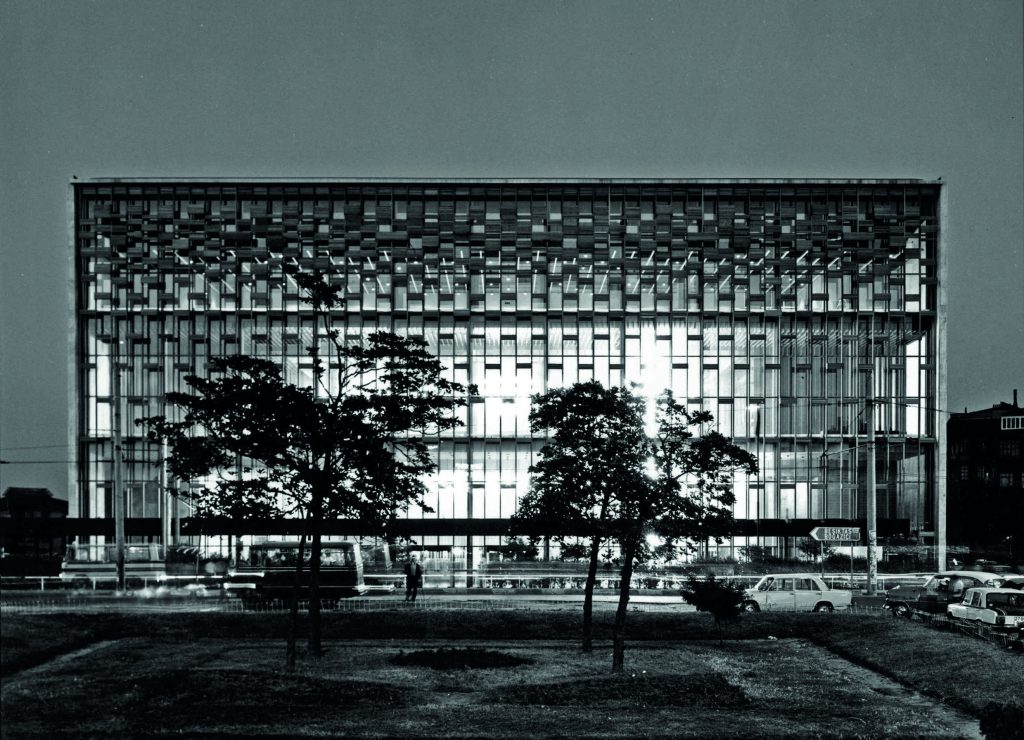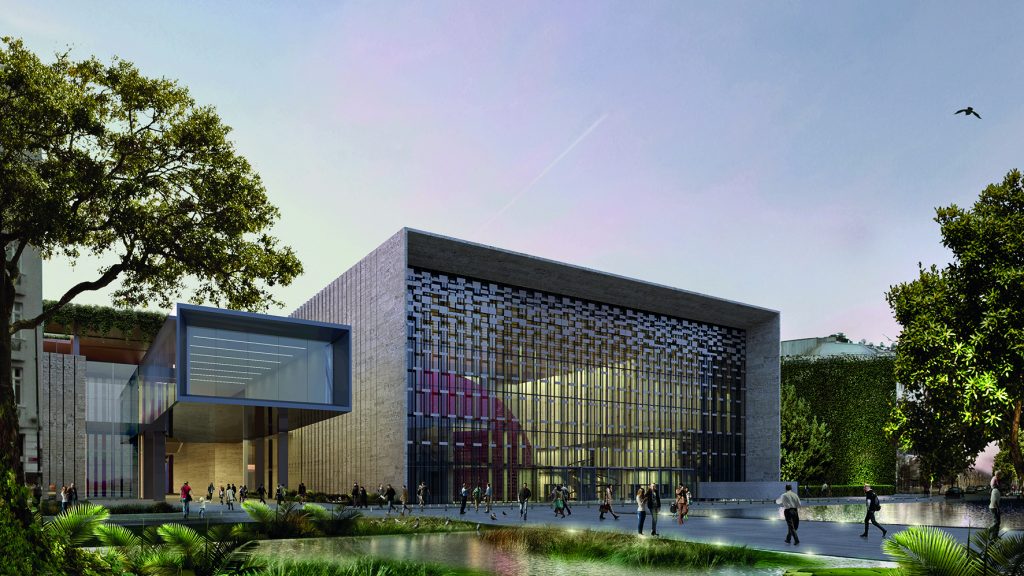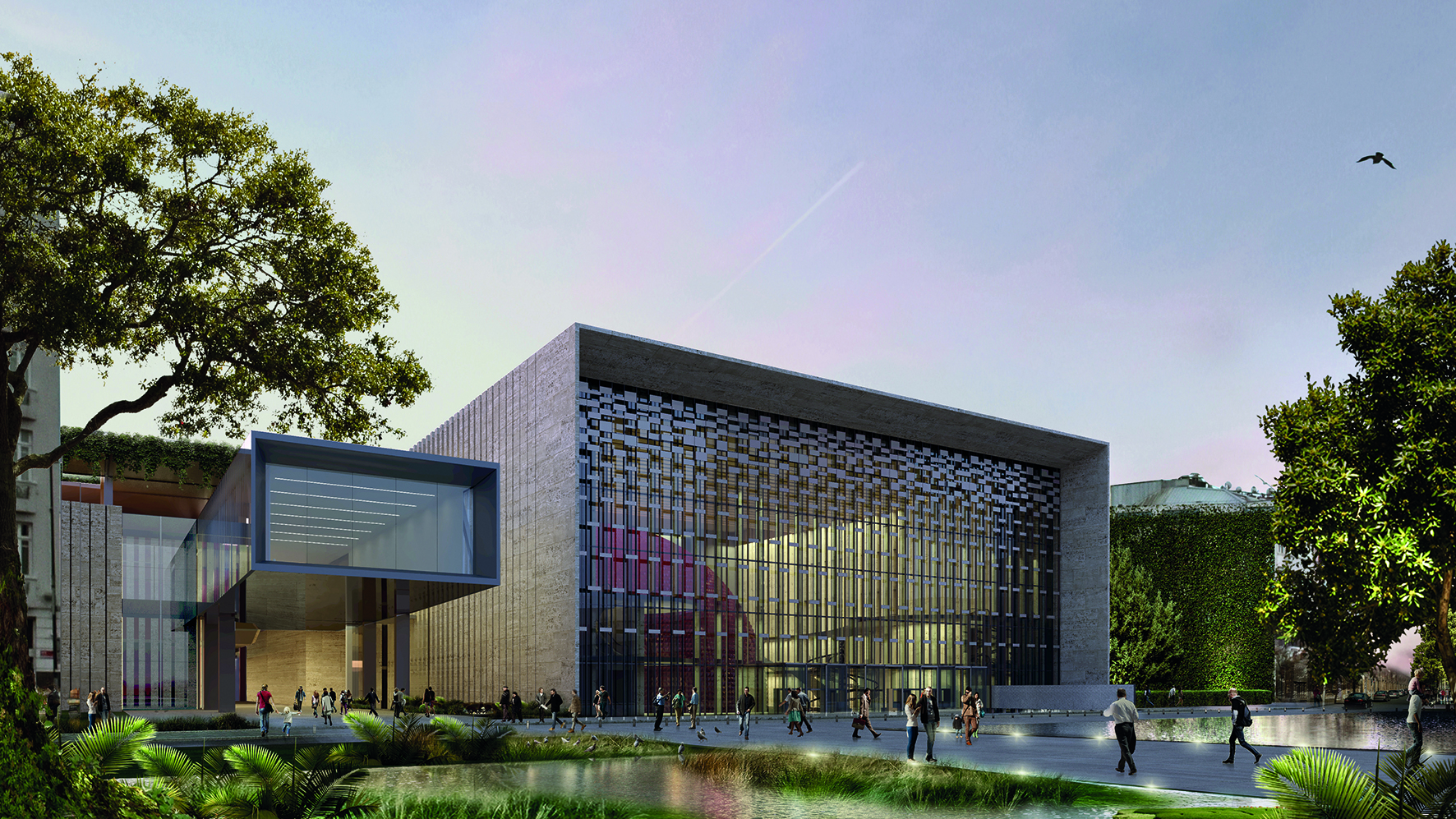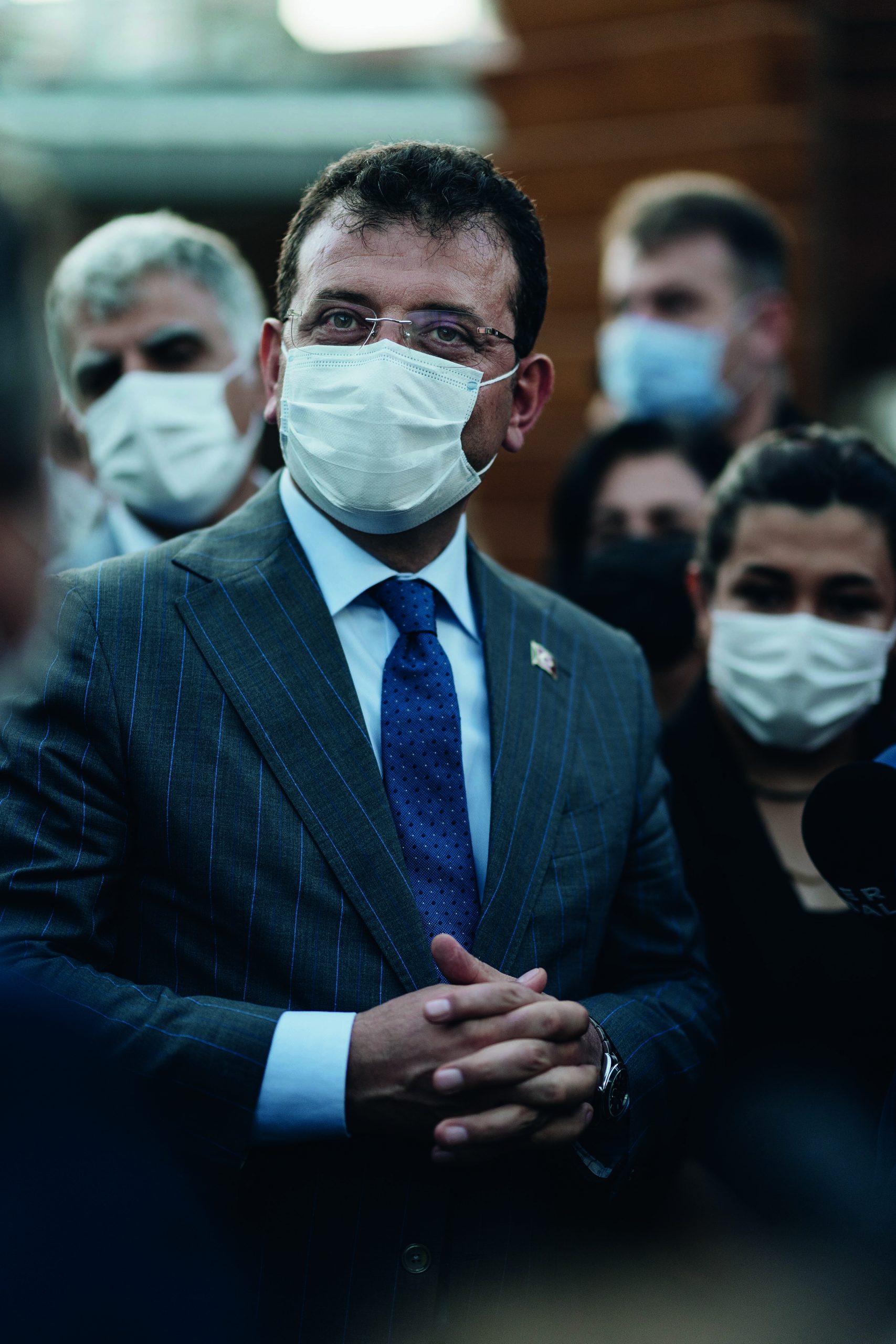Designed by Tabanlioğlu Architects, the Ataturk Cultural Center (AKM) will mainly serve as an opera house, but the center will also have venues ranging from cinema and theater to exhibition halls, cafes and restaurants. Located in the main square of the city, AKM was once the symbol of modern Turkey. Since its closure in 2008, the building has remained empty for more than a decade.
Tabanlioğlu Architects are also engaged in the restoration of the historic 15th Century Haliç Tersanesi (Golden
Horn shipyard) The project regenerates a former industrial area of coastline to create a new cultural destination
for the city, with hotels, housing, offices and leisure alongside a new marina.
Historically, the Golden Horn served as Istanbul’s inner harbor with a longstanding legacy of shipbuilding and repairs in its shipyards. In 1453, Sultan Mehmed II established an imperial shipyard across the Golden Horn
from Constantinople, in the formerly Genoese suburb of Galata.
During the Republican Period, Haliç became a natural port for merchant vessels and warships. At the same time, it served as a shipyard zone while the upper part remained a popular excursion and summer resort of the city, where mansions, waterfront residences and pavilions lined up as a natural extension of the Bosporus. After the 1960s, the region lost its charm under the pressure socioeconomic conditions. Instead, it became a commercial and industrial center. This resulted in the emergency of irregularly constructed residential hubs, or gecekondu, and caused a deterioration in life and building quality of the surroundings as well as the Golden Horn itself. After many years of neglect, the first cleaning works began in 1984.
By means of strategic transformation, the Golden Horn is getting ready to reclaim the prestigious identity of its past to become a vigorous extension of the city. The view of the coastline from the sea emphasizes the image of the city. Part of the Tersane Masterplan is the new Sadberk Hanım Museum. Grimshaw has been commissioned by the Vehbi Koç Foundation to develop designs for the Sadberk Hanim Museum. The museum is being relocated from its current home on the Bosphorus to a listed building in the Golden Horn. The coastline aims to be a new cultural destination for the city.
-
Let’s say someone who does not have a clue finds out that an Opera House will be built in the middle of Taksim square. Do you think that person would find it bizarre?
There has already been a building there since the ‘60s. That’s the important thing. Then, of course, we forgot it because it was closed for a long time. Especially the young generation does not know about it. They didn’t experience it. On the contrary; we attended various concerts, operas, ballet shows we were invited to parties there.
“The most important task is to make Taksim a vibrant square again. A place to meet and socialize. People will visit, attend concerts, read and share their experiences.”
AKM was one of the venues of the 10th International Istanbul Biennial curated by Hou Hanru. It has another significance in this sense. The point is that, the door of the building would open when there was an opera or a ballet show, and it would be closed again when performances were over.
Improper Use
I remember visiting an exhibition of Bedri Baykam back in the day. Nilgün Özayten was the manager of the AKM Art Gallery between 1985 and 2000, but that gallery was never used properly after she left. In other words, AKM had one administrator and she managed everything. It was a nice place but not used adequately.
In 2009, under the leadership of Nuri Çolakoğlu and Şekip Algeviç, as well as the coordination of Korhan Gümüş, we started discussing the future of AKM within the framework of the European Capital of Culture Istanbul project.
On this team, there were actors and actresses, artists, representatives of the chamber of architects and academicians. Two panel discussions were conducted on the future of AKM. That is to say, it was brought up on the agenda there for the first time. Later, I was given the task of renovating this place. We prepared a project. When that project was about to be implemented, the chamber of architects and unions representing some of the artists, came out against it.
-
How so?
They said that the place was a first-degree historical monument and such changes could not be implemented there. Therefore, we made a decision to cancel it. Then, we prepared another project. Upon that, an agreement was made and it went out to tender. At that time, the Gezi Park Protests were happening, and the project was shut down. Frankly, I do not know what happened afterwards either. Years later, when I entered the building again, I saw that the interior was deteriorating and it was now in bad condition. For some time the building was intended to be strengthened, but it was reported that, technically, it would not be secure. During my visit, I saw that only “the bones” of the building were left. At the time, I thought the building had to be rebuilt, but this was a decision beyond me. Its interior and exterior facades were uninsulated, the structure was not compliant with the new fire and earthquake regulations, and opera and ballet halls must be around 2000 people in a city like Istanbul. Due to these reasons, it was finally decided to demolish and rebuild the building. We prepared a new concept project accordingly.

Entrance from Both Sides
-
What was the concept project?
There is a main building that we all recognize. You know, the main building in which we enter the concert hall below. Above it, is the art gallery and the large foyers. At the back, there is a section we call the “backhouse” that is unseen, where offices, a carpentry shop, a paint shop, tailors, rehearsal rooms, dressing rooms and sets for crew members are located. There was a parking lot next to the building at the time. It is a very disused part under which there was once Aziz Nesin’s Stage and warehouses. We came up with an idea after an analysis of the area. If these two sections were combined, a space with two entrances could be created… So the idea was to create connection in two ways; one from the Technical University and the Atatürk Library, and the other from Taksim Square. The axis that we call “Culture Street” became an extension of the Beyoğlu Culture Road that reaches up to Galataport. It is accessible from Taksim and the technical university.
“There is also a library that I attach most importance to. This country does not have any proper library dedicated to art, architecture and music.”
A New Life
We have increased the capacity of the opera hall to over 2000 people, which used to have 1300 seats. Actually, we wanted a hall like Scala in Milan. We thought that it should be a complete cultural center like the Centre Pompidou, and that it should be extended all over that street. So, there is a concert and theater hall for 800 people. There are several multipurpose halls, a small film library where culture and cinema movies can be shown, and a a stage for musical performances.
There is also a library that I attach most importance to. This country does not have any proper library dedicated to art, architecture and music.
There will also be a cafe and restaurant. People will be there, people will be able to spend time there. The building completely overlooks the Bosphorus, and there will be a restaurant with a terrace. What I want to underline is that apart from opera and ballet performances, this place will be a meeting and socializing place for people. It will be alive.

Meeting Place
-
Are there going to be any art galleries or spaces?
Yes, there will be a space for art. Back to your question, the most important task is to make Taksim a vibrant square again. A place to meet and socialize. People will visit, attend concerts, read and share their experiences. So with what we are doing at AKM, it shouldn’t be seen as just an Opera House.
Construction Phases Published on YouTube
-
AKM is a symbolic structure and its demolition has been controversial. Not many people know about the current project, don’t you think so?
From the moment we started, we have transparently posted videos on YouTube about our work. I even presented this subject at an exhibition in Berlin. We had a discussion with the architects there. It has also been discussed here. You know, my father, Hayati Tabanlıoğlu, designed the first AKM building. However in 1970, it was devastated by the fire that broke out while Arthur Miller’s The Crucible play was being staged.
-
AKM was rather like a character you know, like a inhabitant of the city.
I think the building is living its third life today with a story behind it. We already have an enormous archive. Real building parts, old pictures, interviews…
-
Are you going to share these with the public?
Sure, with an exhibition, they will all become components of the building. A visitor, even one without any knowledge about its history, will develop an idea from what they see and read, and will continue to exchange ideas. This is really important.
-
Being the architect of the building that your father, Hayati Tabanlıoğlu, had designed years ago … You must feel a great deal of responsibility?
That’s why I do not see AKM as just a building; it actually has a different kind of meaning for me. This building is nothing like a sculpture or something static, it is built to be used. Think of the opera house in Sydney that changed the very skyline of the whole city. At the moment, there are not many tourists coming to Istanbul as in the early 2000s, but one day this will change. This place will become vibrant again. In addition, opera, ballet and music shows from all over the world will be staged here. The acoustics of the building, and its capacity to entertain the audience are all worldclass. The rehearsal rooms, changing rooms… All throughout the building we used cutting edge, the most advanced technology available.
“At the moment, there are not many tourists coming to Istanbul as in the early 2000s, but one day this will change. This place will become vibrant again. In addition, opera, ballet and music shows from all over the world will be staged here.”
Everything Will Change in Time
-
Istanbul is all grey now; Taksim Square is even worse, all dead… Let’s imagine the building opens tomorrow; don’t you ever worry about how it will unfold in this environment?
There has already been a competition for Taksim Square and some things will change. The important thing here is, how will Taksim regain its former vitality?
-
Taksim is an unpleasant place now; static and in endless gray…
There used to be flower sellers in the street, who disappeared suddenly. I wish they would come back. On one hand, right at the entrance of Beyoğlu, there are those hamburger restaurants. How can they be changed? I remember, when I was little there was a place called Ankara Bazaar. Vakkorama had a very beautiful shop under the Etap Marmara. We used to go there, but now we don’t anymore. There were very nice places. There was the main agency of Turkish Airlines, Marmaris Buffet and Crystal Buffet. They were the reasons to go there. You may also remember the first McDonald’s building designed by Şevki Pekin, or Han Tümertekin’s Art Gallery. All of these are lost today. The arrangement of the square, and and its surroundings, not just AKM, should be perceived from the same perspective. Some things will change eventually. Not everything will happen in a year or two, but it will change over time.
“You know, my father, Hayati Tabanlıoğlu, designed the first AKM building. However in 1970, it was devastated by the fire that broke out while Arthur Miller’s The Crucible play was being staged.”
Taksim Will Benefit From AKM
-
Nothing comes to mind when I think of Taksim today, or what the future will be like. I can’t visualize it…
Consider the Centre Pompidou. When it was first built, Parisians opposed to its construction because they thought the project looked too mechanical.Nowadays, there are not only art galleries but also quality restaurants and cafes in those side streets. When people started to spend time at those cafes, the whole environment changed. They revived and regenerated public there. Indeed, that area was less significant when compared to Taksim. I think AKM will provide many benefits for Taksim. I imagine Beşiktaş fans, coming out of the football games, will pass here in the direction of Beyoğlu. This is nice too. Tourists will visit and many more…
-
Do you think AKM is a first-degree historical monument?
I don’t think so. A first-degree historical monument should be complete; both outside and inside. For instance it can be the Hagia Sophia, the Blue Mosque or Dolmabahçe Palace. Such a structure built in the ‘60s cannot be a first degree historical monument because it requires technical alterations. If it had been one, I would not have been able to work as I do now.
“I think art is very important for the revival of a place. The street can unite with art. The whole area, starting from inside the park, AKM, Marmara and İstiklal Avenue should be combined.”
Taksim Square is Constantly Changing
-
Taksim Square is maybe the country’s most iconic square. It is the city’s main touristic and cultural centre. It has often played host to political rallies and protests over the course of history. While working on your project, you studied how the square transformed over the decades, right?
When I look at the old photographs, plans and sketches of the square, I observe that it is constantly transformed in different directions. On the contrary, St. Mark’s Square in Italy has remained the same. Even the art galleries around it have been the same for years. But Taksim is not like that. I think it was deformed by both Gezi Park and its surroundings; as a result it lost its scale. That’s why we neither feel like we are in a square nor a park. So the problem is there. And then it is cleared of cars and crisscrossed by tunnels. Now, it has become a square that we never pass by. This can also be discussed. The second important point is the natural use of the square. I think
people have abandoned the area because of this lack of scale. So instead of acting as a meeting place, it becomes a place to avoid. Why is there no Turkish Airlines office anymore? Probably because it’s not the right place to be, if you know what I mean…
3D Chandalier in AKM
-
But, will there be other formations in time?
I think art is very important for the revival of a place. The street can unite with art. The whole area, starting from inside the park, AKM, Marmara and İstiklal Avenue should be combined. It can be equipped with spaces for concerts and markets.
-
You have also designed a special chandelier for AKM which disappears into the ceiling, right?
Yes. If I may say so, it is a 3D chandelier. As an important item for the hall, when the performance is over, it will be brought down. The hall is in the shape of a horseshoe, and the seats are uniquely designed.
Grand Opening in March 2021
-
Now, here comes the question: When is the grand opening?
In March 2021, the building will be completely finished. We will be able to stroll around. Certain technical parts will be completed by the end of next year.








